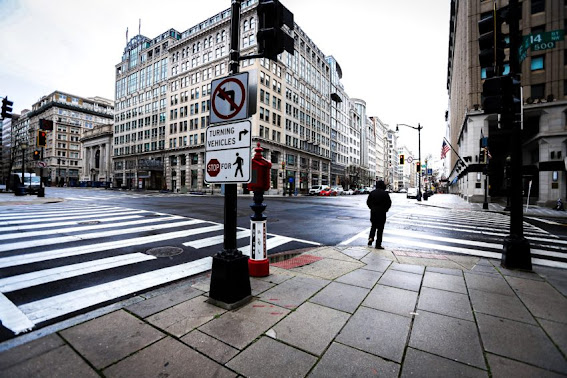'Hidden homeless crisis': After losing jobs and homes, more people are living in cars and RVs and it's getting worse
After Atencio, 33, lost his job as a plumber in May, he and Surovik, 36, delivered for Grubhub by day and at night curled up with their puppy on an air bed in the back of their car parked in a lot in Longmont, Colorado, dreaming of being reunited under one roof with Surovik’s teenage son who was living with his grandmother.
“I’m a mom, so I want to fix everything and make it better,” Surovik said. “It’s hard when you don't have the means to do that when you can’t do anything because you don't have anything.”
Americans are being driven into their vehicles by COVID-19 pandemic-fueled woes. And their ranks are likely to grow as the government safety net frays and evictions and foreclosures rise.
“It’s in times of crisis that the fragility of our systems are laid bare,” said Graham Pruss, a postdoctoral scholar with the Benioff Homelessness and Housing Initiative at the University of California, San Francisco's Center for Vulnerable Populations.
COVID-19 'crisis within a crisis':Homeless people are one of the most vulnerable populations yet largely invisible
Homeless for the holidays:RV parking lot offers Christmas joy to people living in vehicles
Even before COVID-19, millions struggled to afford a decent place to live. The pandemic has made the housing crisis even worse, says Pruss.
He expects a surge in the number of people without permanent homes taking refuge in cars, vans, RVs and campers – and not just in the nation’s most expensive regions such as the San Francisco Bay Area where vehicles have increasingly become a form of affordable housing but all over the country.
"We have seen more people moving into vehicles and more restrictions on public parking for them over the last decade, and then COVID hit,” Pruss said. “I am concerned that we may be facing a population increase in mobile sheltering and vehicle residence at unprecedented levels."
Nearly 1 in 500 Americans is homeless, mostly on the West Coast and in the Northeast, according to estimates. Homeless advocates say people without permanent housing are chronically undercounted. It's even harder to track the tens of thousands of people living in their vehicles rather than on the streets or in shelters because they must move around so much.
“Vehicle residency is one of the fastest-growing forms of homelessness,” said Sara Rankin, associate professor of law and director of the Homeless Rights Advocacy Project at Seattle University.
Stimulus check help: Congress should lower top-income threshold for COVID-19 stimulus checks
Like with every measure of homelessness and poverty, people of color are disproportionately represented among vehicle dwellers as the pandemic exacerbates racial gaps in financial and housing security, she says.
Black Americans, multiracial Americans, Hispanics and Latinos are far more likely to be homeless than the national average and than white Americans, according to the National Alliance to End Homelessness. Last year, a Housing and Urban Development report found that Black people make up nearly half of the homeless population, yet comprise only 13% of the population.
'The hidden homeless population'
“We call people living in vehicles the hidden homeless population,” said Joseph Zanovitch, executive director of HOPE Homeless Outreach in Longmont, Colorado.
For many who are experiencing homelessness, living in a vehicle is preferable to shelters or encampments.
Vehicles offer a greater degree of autonomy and privacy, not to mention protection from the elements. There’s also the comfort that comes with families staying together, including pets. And shelter curfews often make holding down jobs with irregular hours difficult, if not impossible.
Not only that, the isolation of vehicle living has helped many escape the worst of the coronavirus, with infection rates so far lower than feared in the homeless population.
Rusty old RVs and campers, the kinds seen lining city streets or stowed under overpasses, can be acquired for a few thousand dollars, but are not permitted in many RV parks.
With few alternatives, most vehicle dwellers park on public streets, often illegally. They have no running water or electrical hookups, which can create tensions with neighbors who complain of dumped trash and sewage and scarce parking spots.
COVID and homelessness:Transgender activists in the South are battling homelessness with tiny homes and private shelters amid COVID-19
Not only did James and Haydee Charles provide overnight shelter, they raised nearly $35,000 to secure a more stable living situation for more than two dozen homeless families and individuals through their organization, HALO Now, (Helping and Leading Others Now).
“I think you could consider us the average American family who just thought about a way they could use what they had to make a difference,” Charles said.




Comments
Post a Comment